Networking the boat (NMEA 2000) (06/2018)
My first boat had some 80's vintage
speed and depth instruments. Purely analog, each transducer
connected to a display and that was that.
My second boat didn't have
much in the way of instruments but it had a GPS hooked up to the VHF
via NMEA 0183. That was enough to show me I didn't want to deal with
NMEA 0183 ever again. Far too limiting to be worth the effort.
I'd been casually reading about NMEA 2000 but had never had a chance
to set it up until now so had to do some research first. Here are
some notes which might help if you are looking setting up a new
network and have not done it before.
Backbone and drops
If you did any ethernet wiring in the 80's or early 90's, you'll
feel at home.
Here is one good overview document from Maretron: https://www.maretron.com/products/pdf/Network%20Installation%20Guide.pdf
And one from Garmin: https://static.garmin.com/pumac/Tech_Ref_for_Garmin_NMEA2k_EN.pdf
Hopefully the links still work when you read this. I won't repeat
the details they describe more thoroughly already.
But basically, there is one backbone cable which runs between the
two most distant parts on the boat where devices need to be plugged
in. At each extreme of this cable there is a terminator (so, exactly
two terminators in the system). Throughout the length of this
backbone cable, there can be any number of T-connectors which is
where the actual devices plug in via drop cables. Somewhere on the
cable (can be anywhere) there is also one (and only one) special T
connector for powering the network.
On my Catalina 270 the backbone cable runs from the bow (below the V
berth, where the transducers are) to the stern and up the pedestal
guard to the navpod (where the instruments are). I'd guess that's
pretty typical.
Read the details on the documents linked above on backbone cable and
drop cable maximum lengths to make sure your network is in spec. The
limits are quite large so on a small boat like mine not really an
issue. I suppose on a large boat you'd have to think a bit more
carefully about the layout so you don't exceed limits.
Also check the documents on how to compute the current load limits.
This might influence where on the backbone the power T connector
needs to be.
It all sounded very straightforward after I read the above documents
so at this stage of my research I felt it'll be very easy to set up.
But then as I started reading about specific devices and reading the
manufacturer sites and product documentation, the picture started to
get foggier. I saw photos online of different cables that clearly
didn't work together and lots of questions with half-answers and
conflicting answers on various forums. So what actually works with
what and is the NMEA 2000 network a standard or not?
Cables and connectors
The good news is that there is a standard NMEA 2000 connector and
cable.
The cable has five inner wires: red (+12V), black (ground), blue and
white (data), silver/bare (drain). The connectors correspondingly
have the same 5 connections (M or F). This is true for both backbone
and drop cable (to the devices) cables and connectors.
Here is a standard T connector from Maretron:
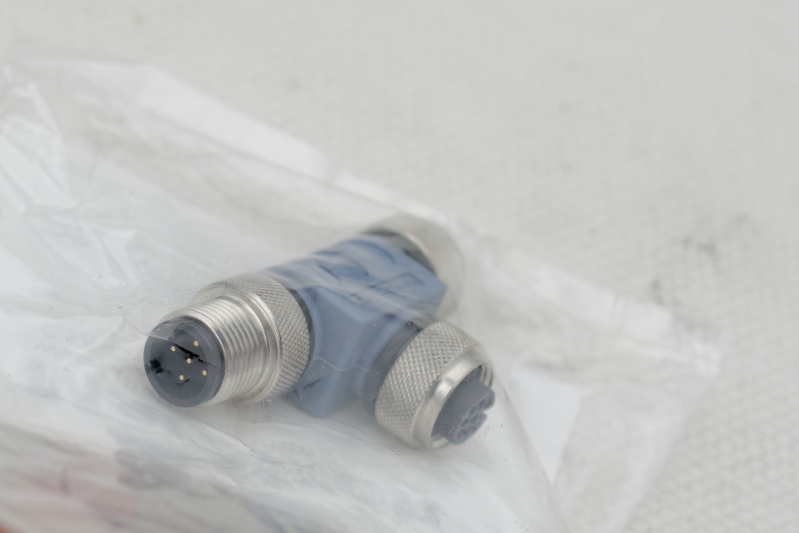
Notice the pin pattern with one pin in the center and four around
it.
Here are two views of a Garmin T connector. As you can see it has
the same pattern:


And here is the connector from some Garmin cable, again with the
same pattern:
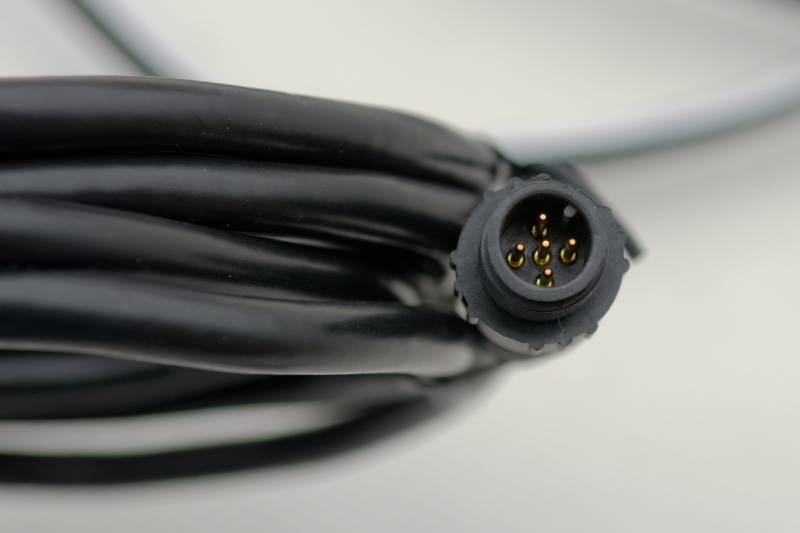
So far so good. The answer is that you can mix and match cables and
connectors from any brand which complies to the standard.
I used backbone cable from Maretron and most of the T connectors I
used are also from Maretron. I used some T connectors and drop
cables from Garmin as well as some drop cables from Maretron. It all
works together in any combination, no issues.
Unfortunately as with most standards, someone always spoils the
party.
Dealing with Raymarine
So here's the confusing part. Raymarine uses two completely
different connector types (I guess introducing one non-standard connector
wasn't enough, they had to introduce two.. aaargh! All to make you buy more cables.)
Here is a Raymarine T connector. It has blue (backbone) and white
(drop cable) connections just like a standard T.
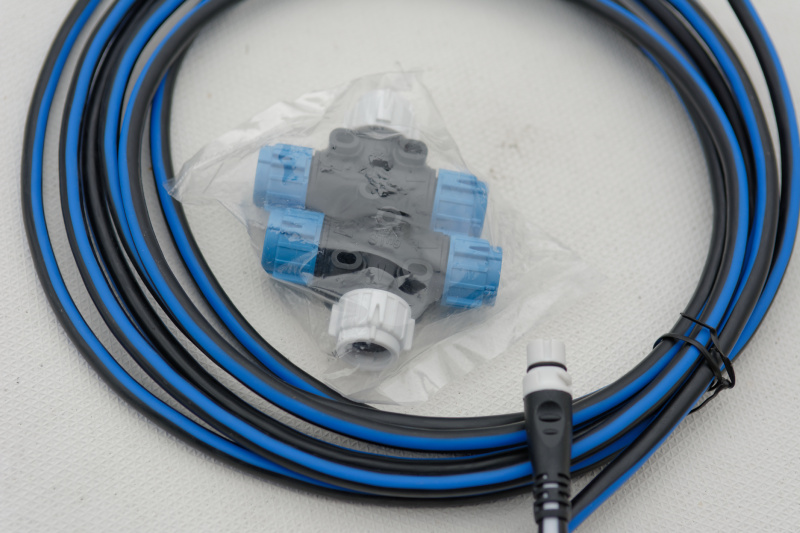
But look at the pin layout. Here is the Raymarine backbone cable. It
has five wires as expected but in a non-standard incompatible
pattern:
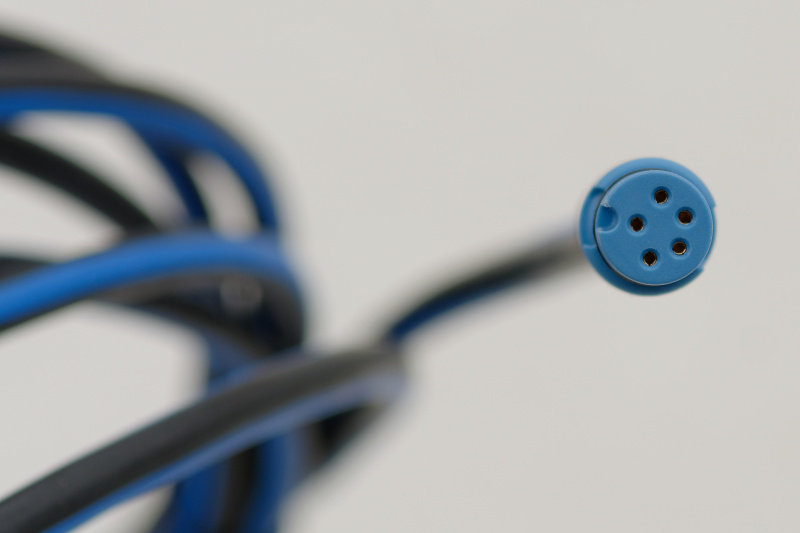
And here is a look at a Raymarine drop cable. This has six wires, in
a yet again incompatible pattern:
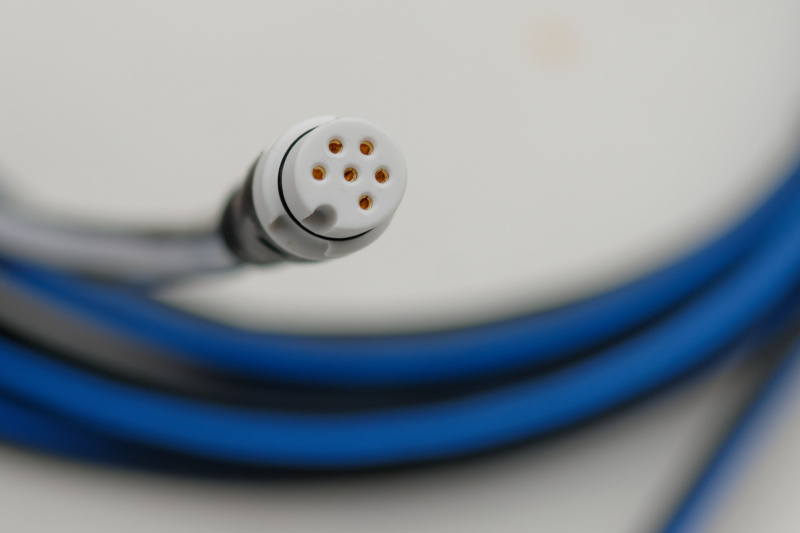
Oh oh.. trouble. So now what?
I'd say the best recommendation is to only buy standard-compliant
devices and make your life easier (and also to vote with your wallet
to promote vendors who stick to the standard instead of making
customers life difficult). If you can only buy NMEA 2000 compatible
devices you'll have an easy time and not have to deal with this
nonsense.
So that was my plan. Unfortunately... nobody really makes a small
boat wheel autopilot other than Raymarine. So I was forced to deal
with this.
The good news
Fortunately there's also good news here. Even though Raymarine has
two different incompatible cable connectors, electrically they are
NMEA2000-compatible and the devices process standard NMEA2000 data
packets. So it's just a matter of getting the plugs to physicall
work on an NMEA 2000 network.
To plug Raymarine devices into a NMEA2000 network, simply take the
drop cable that comes with the Raymarine device and cut off one of
the connectors. Plug the proprietary non-standard connector into the
Raymarine device and splice in a standard NMEA2000 connector into
the other end. Done!
When you cut off the Raymarine drop cable you'll find that it has
six wires. It has the five NMEA2000 wires using the standard color
code, just match them up color-to-color with a standard cable or
standard connector. The sixth wire is yellow and it's not used for
anything. Cut it short and ignore it, it's not needed.
A Raymarine backbone cable has just the five wires in the expected
colors.
I also used an Raymarin iTC-5 (translates old analog depth &
speed sensors to NMEA 2000) which is wacky in its own way because it
needs to be wired onto the backbone instead of using a drop cable
like a normal device. The same applies though, I just wired a
Raymarine backbone connector to the standard backbone cable by
matching the wire colors.
You can use any standard connector (like Garmin or Maretron) cut off
from another cable. A somewhat easier way is to get a Maretron
field-attachable connector (https://www.maretron.com/products/pdf/Micro%20Bulk%20Field%20Datasheets.pdf)
which has screw terminals for each wire. I used several of these and
they make the job easy.
Finally, another way is to get DeviceNet Adaptor cables from
Raymarine. It gets more expensive though as you'd need to buy an
adapter cable for every connection. And philosophically it's
annoying to have to buy an extra cable from Raymarine just to plug
in the device I just bought from them because they couldn't be
bothered to use the standard connector in the first place! I didn't
need to use any of these so can't comment on them, but presumably
should also work fine, extra expense aside.
I hope Raymarine comes to their senses in their next generation of
products and use proper standard cables and connectors. But until
then, at least it's easy (although somewhat tedious) to work around
this problem.
Back to
my Catalina 270 page.






